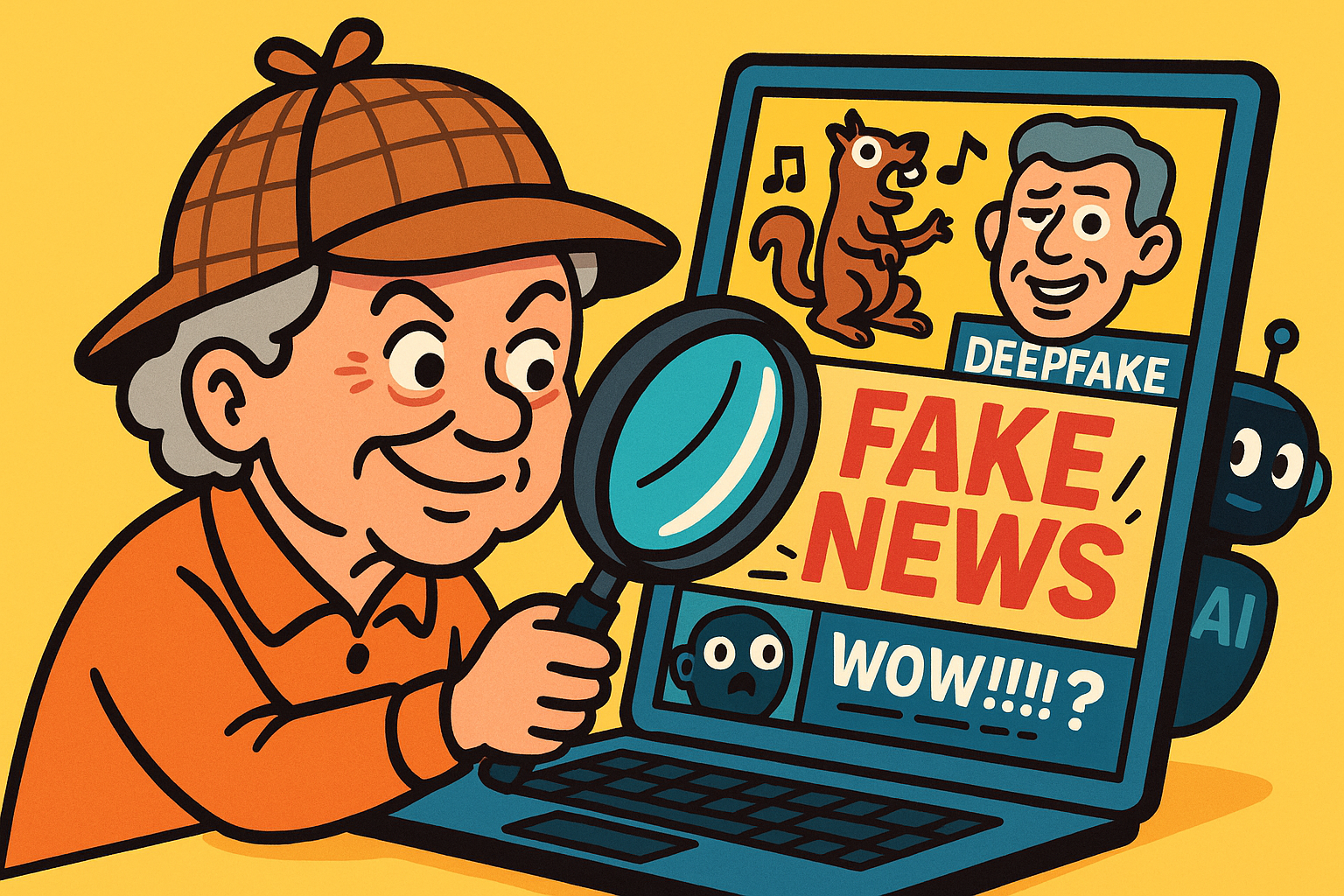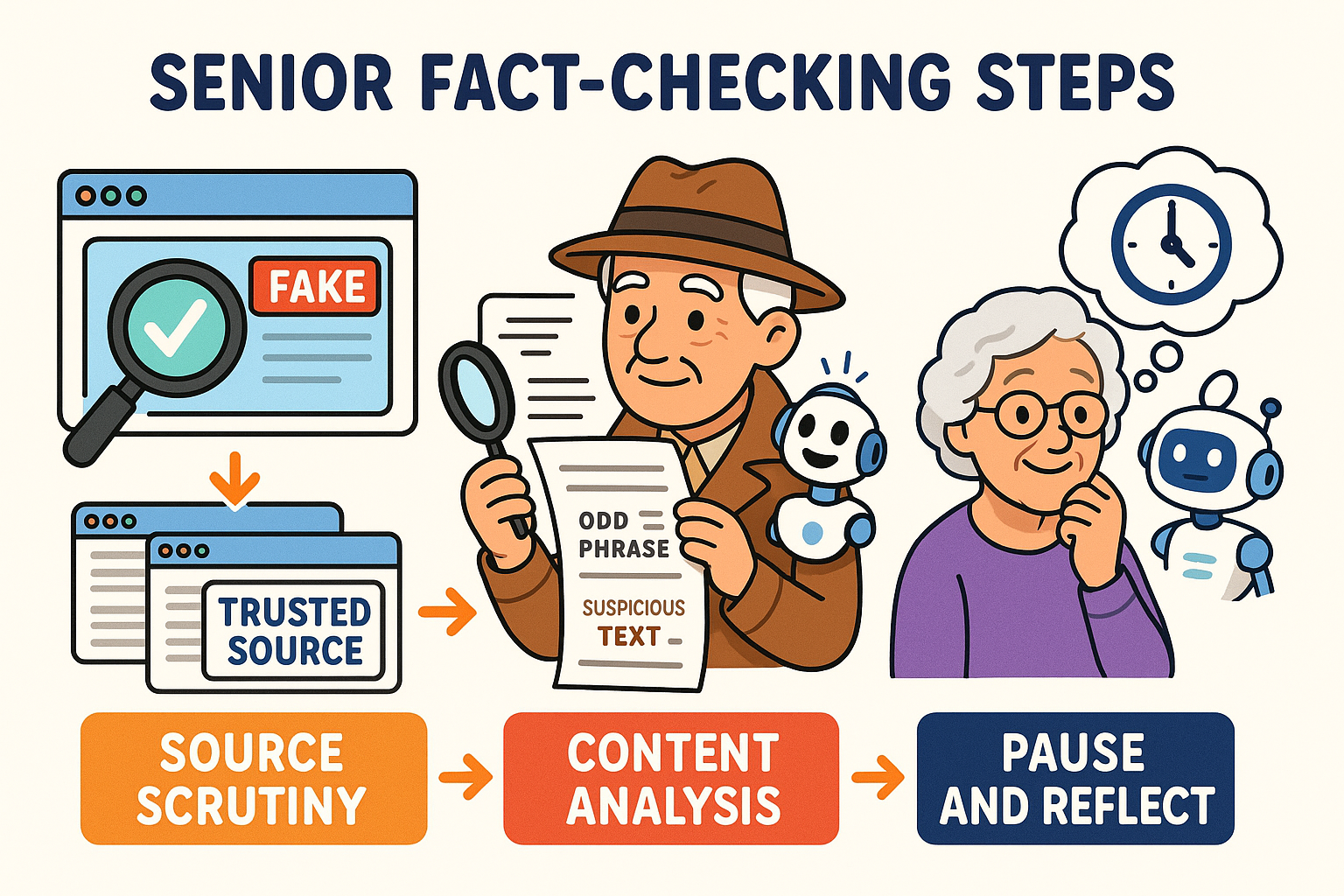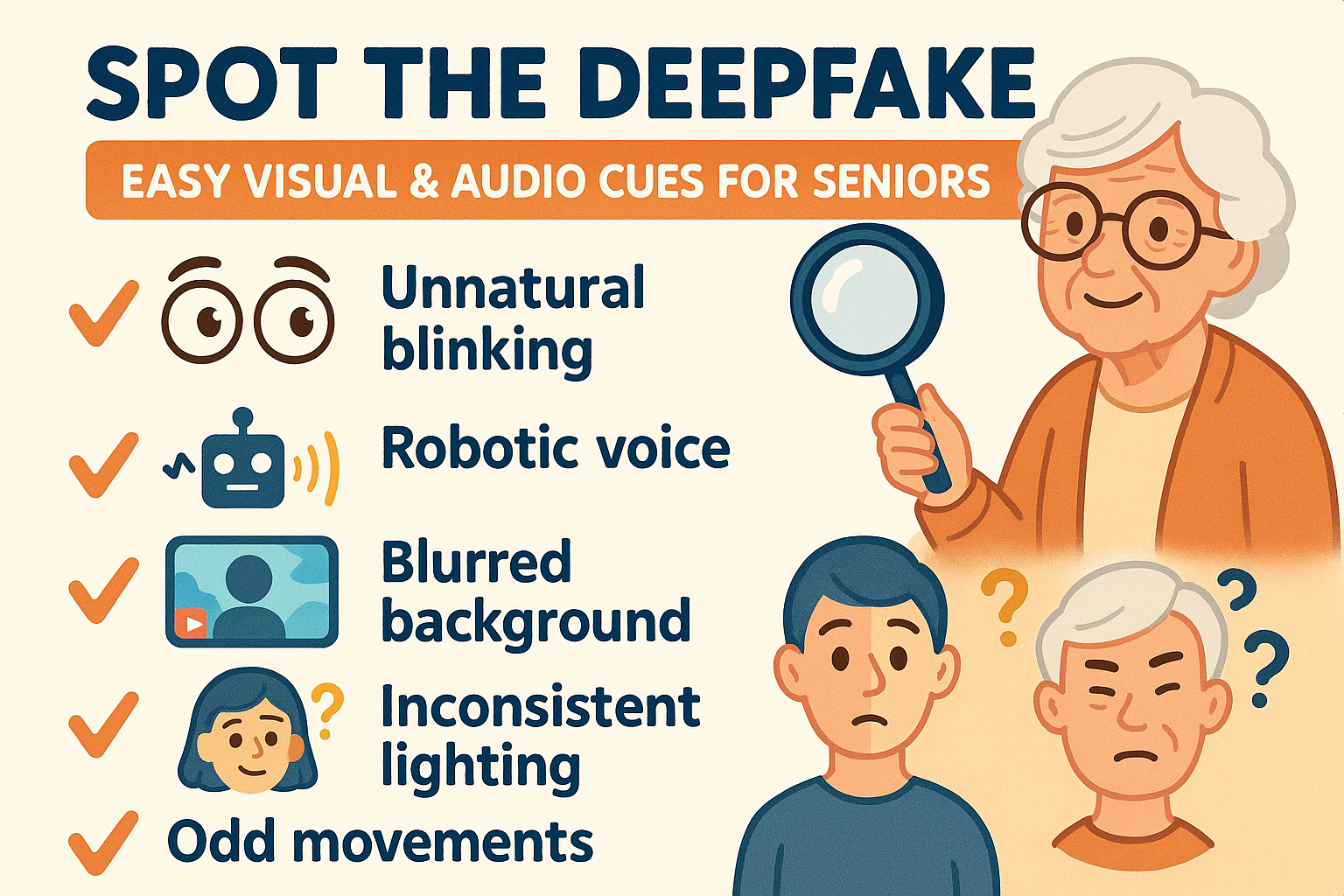
Newsletter Subscribe
Enter your email address below and subscribe to our newsletter


Have you ever received an email from your cousin Barb that made you spit out your coffee?
The one claiming that scientists discovered a species of squirrel in Peru that can yodel the national anthem? And for a moment, just a tiny moment, you thought, “Well, Barb’s a smart lady…”
We’ve all been there. For years, the internet has been a wild west of questionable claims and tall tales.
But recently, a new sheriff—or maybe a new outlaw—has ridden into town: Artificial IntelligenceArtificial Intelligence (AI) is basically when computers get smart—really smart. Imagine if your c... More, or AI. It’s making it harder than ever to tell the yodeling squirrels from the actual news.
The good news? You don’t need a computer science degree to navigate this new landscape.
All you need is a little healthy skepticism and a few simple tricks up your sleeve. Think of it as developing digital common sense. Let’s dive in to this aspect of AI safety and learn how to separate the facts from the fiction.
First, let’s get our terms straight. “Misinformation” is simply false information, regardless of intent. Your cousin Barb sharing the squirrel story is misinformation; she doesn’t mean any harm.
“Disinformation,” on the other hand, is false information spread on purpose to deceive people.
So, where does AI fit in?
Imagine you have a photocopier that, instead of just making copies, can create brand-new, incredibly realistic-looking documents from scratch.
That’s kind of what AI can do. It can write articles, create images of things that never happened, and even mimic a person’s voice with terrifying accuracy.
If this makes you a little nervous, you’re not alone. Recent polls show that 74% of older adults are wary of AI-generated health information.
This technology is powerful, and it’s smart to be cautious. The first step is learning to spot the difference between something created by a human journalist and something cooked up by a clever computer program.

Distinguishing real news from AI-generated misinformation helps seniors understand the unique challenges AI poses to online information trustworthiness.
When you encounter a piece of information online that makes your eyebrows shoot up, don’t just react or share.
It’s time to put on your detective hat. Your new motto is: Pause, Ponder, and Poke Around.
Before you even read the headline, ask yourself: “Who is telling me this?”
Is it a well-known news organization or a website you’ve never heard of called “TruthfulNewsAndPuppies.net”?
Look at the website’s name. Does it have a strange ending or a typo? These are red flags.
A trustworthy source will have a professional appearance and clear information about who they are. Learning how to tell if a website is legit is a foundational skill for any online detective.
This is the single most powerful tool in your kit. Instead of digging around on the suspicious website, open a brand-new tab in your browser.
Search for the name of the website or the author of the article. What do other, more reliable sources say about them?
If you can’t find anything, or if other sources call them out for being unreliable, you have your answer. Don’t just read the story; read about the story.
Now look at the content itself. AI-generated text often has some funny “tells.”
It might sound a little too formal, like a robot trying to write a Shakespearean play. It might repeat phrases awkwardly or lack any real human emotion.
If an article about a heartwarming rescue story sounds like it was written by an appliance manual, an AI might be the author.

Following these clear steps empowers seniors to verify information, especially AI-influenced content, building confidence and critical digital literacy.
The scariest part of AI for many people is the “deepfake“—a video or audio clip that has been altered to make it look like someone said or did something they never did.
We’ve seen fake videos of politicians seeming to say outrageous things. We’ve even heard about scams where criminals use AI to clone a loved one’s voice to ask for money over the phone.
It sounds like science fiction, but it’s real. Luckily, AI isn’t perfect… yet. Here’s a quick checklist to help you spot a deepfake.

This memorable checklist anchors seniors’ ability to quickly spot deepfake videos, boosting their confidence to question suspicious online content.
Being able to spot online baloney isn’t just about not falling for a story about yodeling squirrels. It’s about protecting your health, your finances, and your peace of mind.
AI-powered misinformation can promote dangerous health cures or discourage proven medical treatments.
Financial scams using AI voice cloning can trick you into sending money to criminals.
And sensational, false stories are often designed to make us angry and fearful, driving wedges between friends and family. By learning to be a critical consumer of information, you’re taking a powerful step to safeguard your well-being.
Not at all! AI is just a tool. It can be used to help doctors diagnose diseases or to write a simple summary of a meeting. The key is to remember that the output always needs a critical human eye. Just because something was written with AI doesn’t mean it’s false, but it’s a good reason to double-check the source.
This is a tricky one! The best approach is to be gentle and non-confrontational. Instead of saying, “That’s fake!” try asking a question like, “That’s an amazing story! Where did you see it?” This can gently prompt them to check their source without making them feel defensive.
Yes! One of the easiest is a “reverse image search.” If you see a suspicious photo, you can use Google Images to search for that photo and see where it originally came from. For checking claims, websites like Snopes, PolitiFact, and FactCheck.org are excellent resources run by professional fact-checkers.
Technology just had a massive growth spurt. The AI tools available today are vastly more powerful and accessible than they were just a couple of years ago. We’re all learning how to live in this new reality together, which is why building these critical thinking skills now is so important.
Navigating the internet in the age of AI can feel like a daunting task, but it doesn’t have to be. It all comes back to that simple mantra: Pause, Ponder, and Poke Around.
By taking a moment to think before you trust or share, you’re not just protecting yourself—you’re helping to make the entire internet a more reliable place. You’re becoming a savvy, confident digital citizen.
Keep practicing these skills, stay curious, and don’t be afraid to ask questions. To continue building your digital confidence, explore the many other helpful guides and tips available here at Senior Tech Cafe. You’ve got this